19 Things You Never Knew About Harper Lee and ‘To Kill a Mockingbird’
Updated: May 25, 2023
Curious about the famously mysterious author of 'To Kill a Mockingbird' and the forthcoming book 'Go Set a Watchman'? Here, fascinating details about Harper Lee, one of America's most celebrated authors.
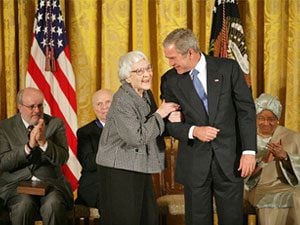 Southerner Harper Lee continues to be one of America’s most famous and beloved authors despite the fact that she’s written only one book. That is, until this summer, when her long-awaited second novel, Go Set a Watchman, will be published. Not long after Mockingbird‘s release in 1960, Lee stopped giving interviews. Her last public appearance was in November 2007 (shown, right), when she received the Presidential Medal of Freedom from George W. Bush. Since then, she has resided in an assisted-living facility in her hometown of Monroeville, Alabama. Here, some fascinating background about the elusive author and her beloved novel. (On February 19, 2016, the mayor’s office in Monroeville confirmed that Lee had passed away.)
Southerner Harper Lee continues to be one of America’s most famous and beloved authors despite the fact that she’s written only one book. That is, until this summer, when her long-awaited second novel, Go Set a Watchman, will be published. Not long after Mockingbird‘s release in 1960, Lee stopped giving interviews. Her last public appearance was in November 2007 (shown, right), when she received the Presidential Medal of Freedom from George W. Bush. Since then, she has resided in an assisted-living facility in her hometown of Monroeville, Alabama. Here, some fascinating background about the elusive author and her beloved novel. (On February 19, 2016, the mayor’s office in Monroeville confirmed that Lee had passed away.)
1. Harper Lee’s real name is Nelle Harper Lee.
Her parents chose “Nelle” as a tribute to her maternal grandmother Ellen (Nelle is Ellen spelled backwards). Her family called her “Nelle Harper”; her friends, “Nelle.” But she opted for “Harper Lee” for her author’s name because she didn’t want people to mispronounce her name as “Nellie” (it should rhyme with bell).
2. To Kill a Mockingbird once beat the Bible.
While the Bible has vastly outsold Lee’s novel—worldwide, more than 5 billion vs. more than 40 million copies—it came in No. 2 to Mockingbird in a 2009 survey in which respondents picked the most inspirational book of all time.
3. To Kill a Mockingbird made Harper Lee fabulously wealthy—but she led a most frugal life.
Information on her finances is scarce, but according to a NewYorker.com article, she earned an eye-opening $816,448.06 in royalties from Mockingbird in the first six months of 2010. What did she spend it on? Very little. She would make regular trips to the laundromat because she and her oldest sister Alice—the two shared a home—did not own a washing machine. Other things she lived without: air conditioning, computers, and cell phones. For all her correspondence and writing, she used a manual typewriter. As for all that money? Lee was known to make numerous secret donations to her local Methodist church and to charities.
4. Until 2007, Harper Lee split her years between Monroeville, Alabama, and New York City.
In New York, she kept an apartment on the Upper East Side. She liked going to the Metropolitan Museum of Art and rooting for the Mets. She also enjoyed the occasional trip to Atlantic City to play the slots. Due to her mistrust of air travel—from when she worked as an airline reservations clerk pre-Mockingbird and learned about the accidents that could happen—she always took Amtrak between Alabama and New York.
5. Among her favorite activities when home in Monroeville: fishing, feeding ducks and geese at a local pond, and drinking coffee at McDonald’s.
6. Harper Lee’s favorite authors are William Faulkner, Eudora Welty, Jane Austen, and Thomas Macaulay. In a 1964 radio interview, Harper said, “All I want to be is the Jane Austen of south Alabama.”
7. Harper Lee is an Anglophile.
She studied for one happy summer at Oxford University. Back in Alabama, she and Alice subscribed to many British publications: the Spectator, the Weekly Telegraph, and the Times Literary Supplement. They read U.S. magazines, too, including the New York Times Book Review, New York, Newsweek, and Vanity Fair.
8. Harper and Alice were ardent college football fans.
Since Harper had gone to University of Alabama, they cheered for the Crimson Tide. They also liked watching pro golf, especially the Masters.
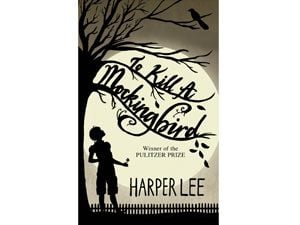 9. To Kill a Mockingbird was slowly and painstakingly written.
9. To Kill a Mockingbird was slowly and painstakingly written.
Lee said she spent six to 12 hours a day at her desk, and she’d produce one manuscript page of text per day. “Contrary to what most people think, there is no glamour to writing. in fact, it’s heartbreak most of the time,” she told a class at Sweet Briar College in the late 1960s, according to Charles Shields’ unauthorized biography Mockingbird.
10. Harper Lee initially wanted Atticus Finch to be played by Spencer Tracy in the movie version of Mockingbird.
She sent a letter asking him to take on the role, but through his agent, he said that he was too busy on another film. After Gregory Peck was cast, she came to adore him. Before the 1963 Oscars where he was nominated for Best Actor, she sent him her father’s prized pocket watch, engraved with “To Gregory from Harper.” She remained friends with Peck until he passed away in 2003.
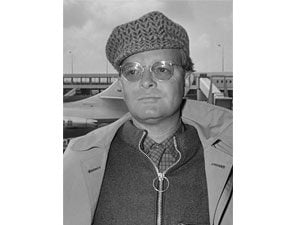 11. Harper Lee and Truman Capote were childhood friends.
11. Harper Lee and Truman Capote were childhood friends.
They met when he was sent to stay with aunts who lived next door to the Lees. He was two years older than Harper, and they wrote together after Harper’s father bought the children a typewriter to share. She based the Mockingbird character Dill on Capote (shown, right, in 1968).
12. She played a key role in Truman Capote’s true-crime masterpiece In Cold Blood.
After Capote was assigned by an editor at the New Yorker to write about the murder of the Clutter family in Kansas, he asked Harper to assist him. She’d just handed in To Kill a Mockingbird and was awaiting its publication. She accompanied him to Kansas where they spent two months conducting interviews. She returned to the state with him at least three more times, including covering the trial of murderers Dick Hickock and Perry Smith. Capote dubbed her his “assistant researchist.” She was close enough to Hickock and Smith that they requested her presence at their 1965 execution; while Capote attended, she declined.
13. But the book ended up driving them apart.
She and Capote became estranged, in part because she felt that he never gave her adequate credit for her work on his bestseller. And she was furious after he told his biographer that her mother, Frances Lee, twice tried to drown her when she was young—something she and Alice both said was a lie. His substance abuse further exacerbated their rift.
14. She began writing her own true-crime book.
In the late 1970s and early 1980s, she spent a couple of years researching an In Cold Blood-style account of part-time preacher W.M. Maxwell, who was suspected of murdering five people close to him and profiting from their insurance policies. Writer Marja Mills wrote in her book Mockingbird Next Door, “Nelle told me that her research uncovered information she believed put her in personal jeopardy. She would not elaborate.”
15. Harper Lee was able to see herself on screen in the two Truman Capote biopics, 2005’s Capote and 2006’s Infamous.
She thought Phillip Seymour Hoffman’s depiction of Capote was “uncanny,” but felt that the movie was “historical fiction.” She liked Infamous—in which she was portrayed by Sandra Bullock—enough to write director Douglas McGrath. As reported in Mills’ book, Harper told him “You have created a creature of such sweetness and light and called her Harper Lee that I forgive the socks” (referring to the fact that he chose to have Bullock as Lee wear black pumps with white socks).
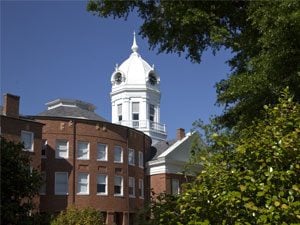 16. Some 30,000 tourists visit Monroeville, Alabama, each year.
16. Some 30,000 tourists visit Monroeville, Alabama, each year.
Despite knowing they’ll never see Ms. Lee herself, visitors still want to walk through the town that inspired her fictional community of Maycomb. The old courthouse (shown, left) now houses a museum with two permanent exhibits, “Truman Capote: A Childhood in Monroeville” and “Harper Lee: In Her Own Words.” You can also walk through the courtroom. While the Mockingbird movie was not filmed there, set designers created an exact replica of it for the film. Every summer, a stage version of To Kill a Mockingbird is performed in the town. The second half takes place in the courtroom with theatergoers sitting in the room’s audience seats as if they were watching an actual trial.
17. Harper Lee loved to laugh.
Writer Marja Mills lived next door to Alice and Harper for more than a year in the 2000s, and Mills would borrow films on Netflix for the three women to watch. Some of the movies they enjoyed were Best in Show, A Mighty Wind, Wallace and Gromit, Kind Hearts and Coronets, Fargo, Heaven Help Us, and Waiting for Guffman.
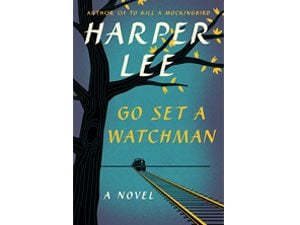 18. The origins of her upcoming book, To Set a Watchman, are murky.
18. The origins of her upcoming book, To Set a Watchman, are murky.
The manuscript was said to be discovered by Harper Lee’s lawyer, Tonja Carter, last summer. It was written before Mockingbird, but featured an older Scout in the 1950s (versus 1930s Mockingbird). According to Charles Shields’ biography, Go Set a Watchman was Harper Lee’s initial title for To Kill A Mockingbird. Her editor thought it was too oblique and they re-named it Atticus before changing it again. Earlier this year, the state of Alabama conducted an elder abuse investigation into Harper Lee and her affairs but found her “in full possession of her mental faculties.”
19. Harper Lee said of Mockingbird, “I wish I’d never written the damn thing.”
Harper once expressed her regrets to writer Mills in those words. A few years later, Mills reminded her of that remark and asked if she still felt that way. Harper replied, “Sometimes. But then it passes.”